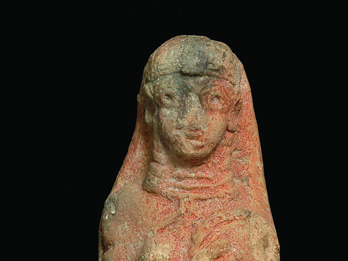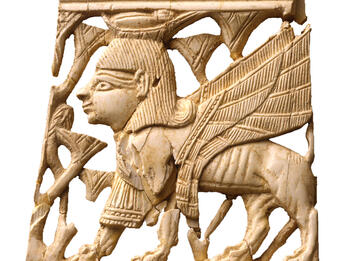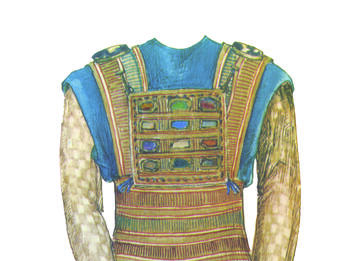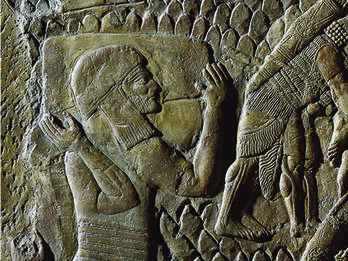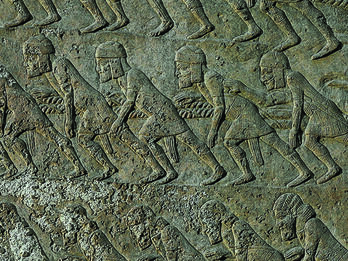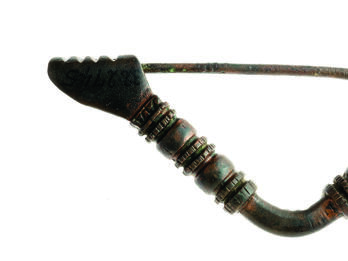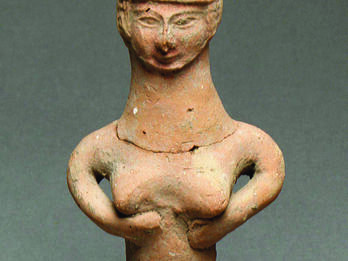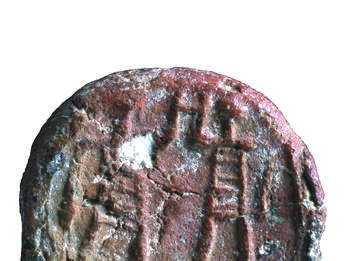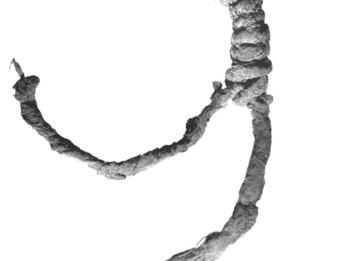Showing Results 1 - 10 of 20
Restricted
Image
There are numerous terra-cotta plaque figurines of females, some naked and others clothed, holding disks, mostly from northern Israel and Transjordan. Many come from border towns and towns whose…
Places:
Hazor, Land of Israel (Tel Hazor, Israel)
Date:
Iron Age II, 9th–8th Century BCE
Categories:
Restricted
Image
Sphinxes are among the most ubiquitous images on Iron Age Levantine ivories. The sphinx combines the features of several animals; it has the head of a human, the wings of an eagle, and the body of a…
Places:
Samaria, Land of Israel (Samaria, Israel)
Date:
Iron Age IIA–IIB, 9th–8th Century BCE
Subjects:
Categories:
Restricted
Image
This necklace of beads is predominantly of orange glass but incorporates stone beads and gold spacers as well. The beads range in shape from bi-conical to cylindrical and also include larger…
Places:
‘En Gedi, Land of Israel (‘En Gedi, Israel)
Date:
Persian Period, 5th Century BCE
Subjects:
Categories:
Public Access
Image
A detailed description of the priests’ sacral vestments in Exodus 28 provides written evidence of sacred dress and adornment, although neither archaeological evidence nor pictorial representations for…
Places:
Land of Israel (Israel)
Date:
Biblical Period
Subjects:
Categories:
Restricted
Image
This detail appears in a relief from the palace of Sennacherib, king of Assyria (r. 705–681 BCE), in Nineveh depicting the Assyrian conquest of Lachish in 701 BCE. (For the full relief, see "Conquest…
Places:
Nineveh, Assyria (Mosul, Iraq)
Date:
ca. 701 BCE
Subjects:
Categories:
Restricted
Image
This relief from Sennacherib’s palace shows workers rebuilding Nineveh, harnessed by shoulder straps to ropes by which they haul a large bull colossus toward the palace. Workers from various places…
Places:
Nineveh, Assyria (Mosul, Iraq)
Date:
Early 7th Century BCE
Subjects:
Categories:
Restricted
Image
The fibula, which replaced the toggle pin during the Iron Age, is similar to a modern safety pin. It had a main bent section with a clasp, which was often elaborately decorated, and a simple straight…
Places:
Tell Beit Mirsim, Land of Israel (Tell Beit Mirsim, Israel)
Date:
Iron Age II, Early 10th–Early 6th Century BCE
Subjects:
Categories:
Public Access
Image
Terra-cotta pillar figurines are found throughout the biblical territory of Judah and date to the eighth to seventh centuries BCE. Most were decorated with a white background layer and one or more…
Places:
Lachish, Land of Israel (Tel Lakhish, Israel)
Date:
Iron Age IIB–IIC, 8th–7th Century BCE
Subjects:
Categories:
Restricted
Image
This bulla, found near the Western Wall in Jerusalem in the remains of a seventh–sixth-century BCE building, depicts two men facing each other, each raising one hand toward the other with the other…
Places:
Jerusalem, Land of Israel (Jerusalem, Israel)
Date:
Iron Age IIC, 7th–6th Century BCE
Subjects:
Categories:
Restricted
Image
This fringe from Kuntillet Ajrud, knotted from undyed linen threads, could be the fringe (tzitzit) that Israelites are commanded to wear on the corners of their garments, as indicated in Numbers 15:37…
Places:
Kuntillet Ajrud, Land of Israel (Kuntillat Jurayyah, Egypt)
Date:
Iron Age II, Late 9th–Early 8th Centuries BCE


